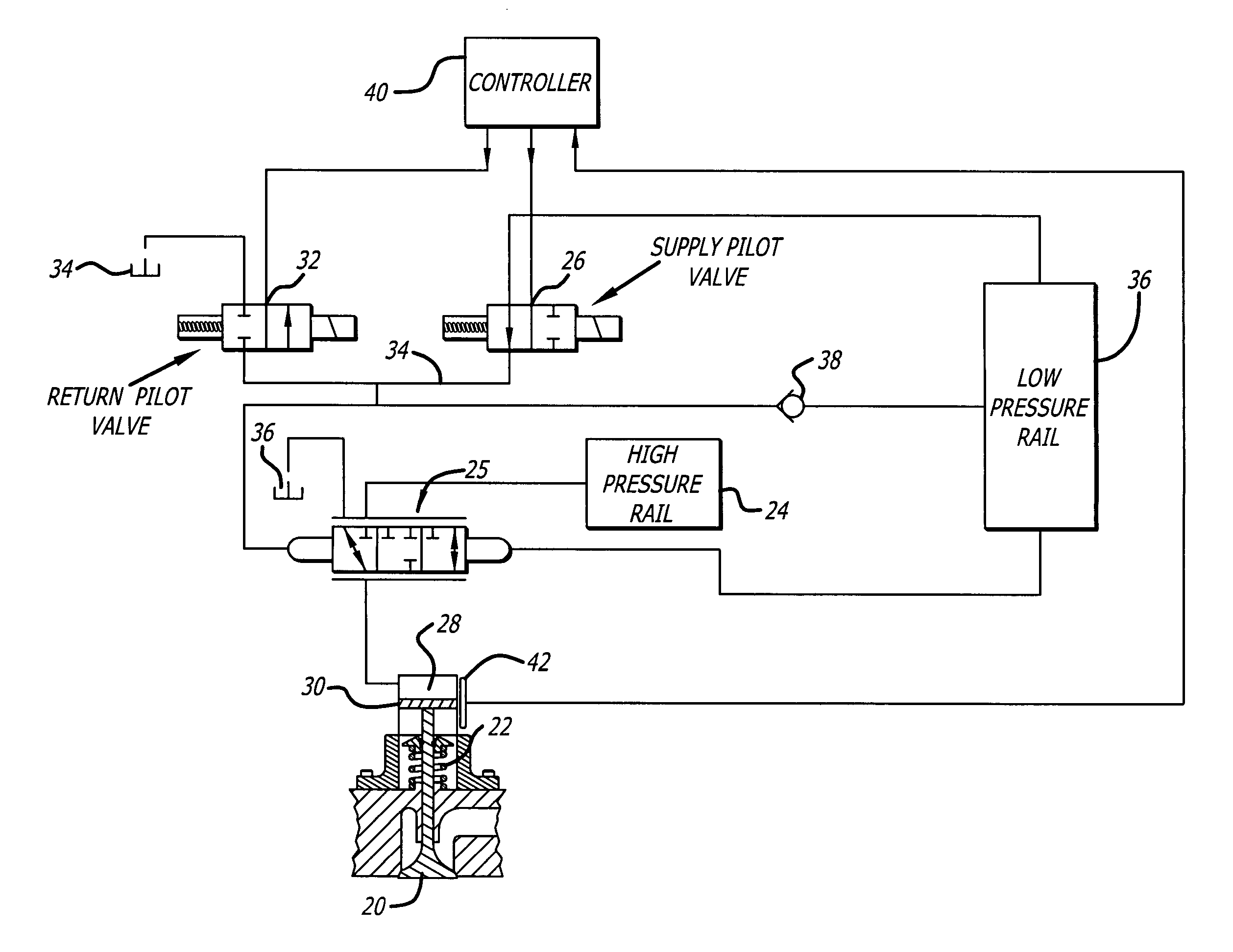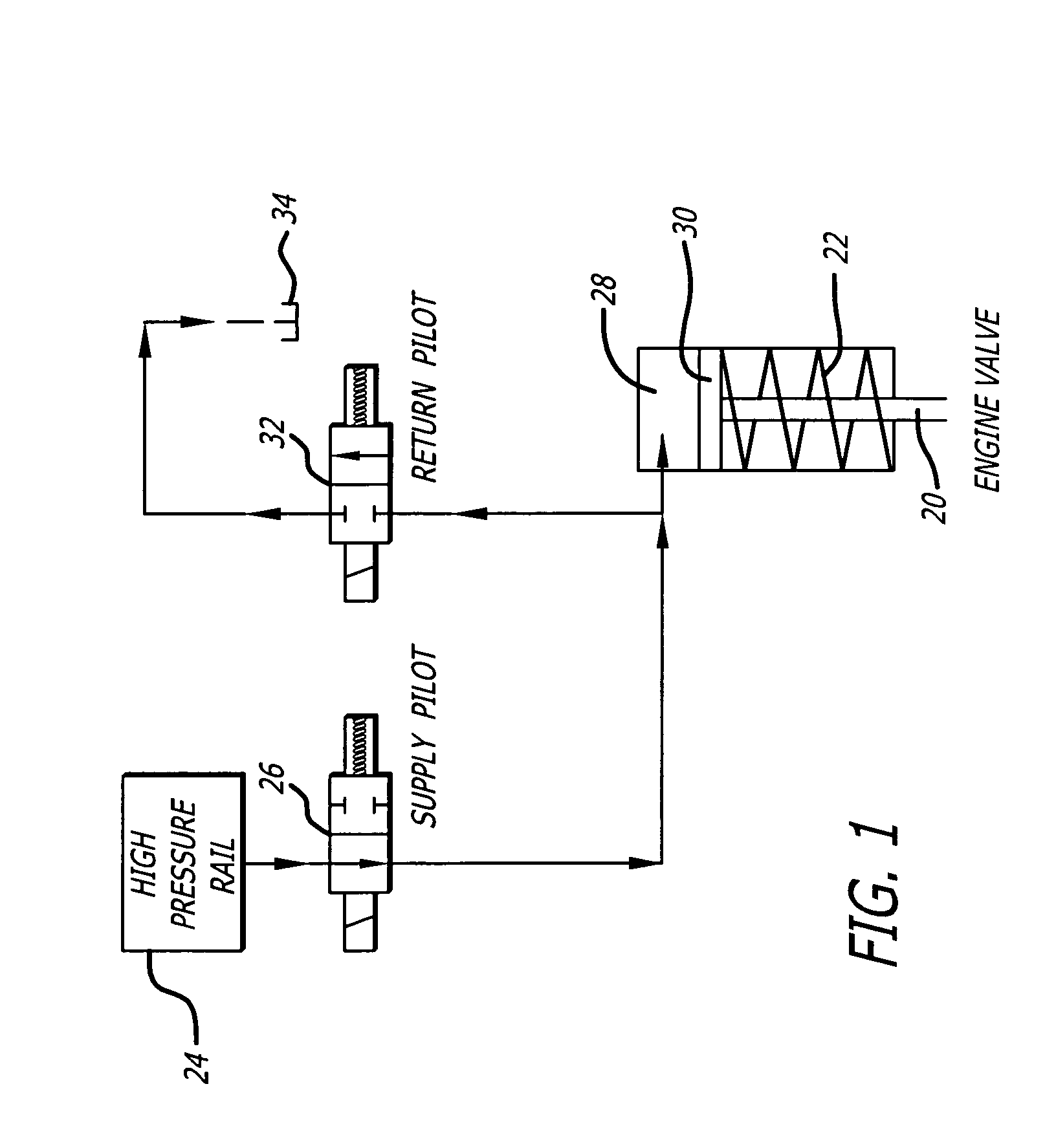Hydraulic valve actuation methods and apparatus
a technology of hydraulic valves and actuators, which is applied in the direction of valve operating means/release devices, machines/engines, non-mechanical valves, etc., can solve the problems of increasing concern for the optimal valve timing and lift for maximum power at one engine speed is not fixed, and the optimal valve timing and lift for maximum power at one engine speed is not the same. , to achieve the effect of saving hydraulic energy and improving energy efficiency
- Summary
- Abstract
- Description
- Claims
- Application Information
AI Technical Summary
Benefits of technology
Problems solved by technology
Method used
Image
Examples
Embodiment Construction
[0013]In a typical piston-type internal combustion engine having intake and exhaust valves, each with an engine valve return spring, the engine valve return springs are preloaded to provide the desired engine valve closing forces. These forces generally include a predetermined minimum force to hold the engine valve closed to prevent leakage, particularly after the compression and the power strokes. Also, in cam driven engine valve systems, the engine valve return springs must provide adequate forces throughout the engine valve motion to assure that the engine valve and engine valve drive system (cam follower, etc.) actually follow the profile defined by the cam, and do not float free of the cam at high engine speeds, as floating causes loss of power and can damage or destroy the engine valve or parts of the engine valve drive system.
[0014]In hydraulic engine valve drive systems, the engine valve return spring requirements are similar, as the required spring force to hold an engine v...
PUM
 Login to View More
Login to View More Abstract
Description
Claims
Application Information
 Login to View More
Login to View More - R&D
- Intellectual Property
- Life Sciences
- Materials
- Tech Scout
- Unparalleled Data Quality
- Higher Quality Content
- 60% Fewer Hallucinations
Browse by: Latest US Patents, China's latest patents, Technical Efficacy Thesaurus, Application Domain, Technology Topic, Popular Technical Reports.
© 2025 PatSnap. All rights reserved.Legal|Privacy policy|Modern Slavery Act Transparency Statement|Sitemap|About US| Contact US: help@patsnap.com



